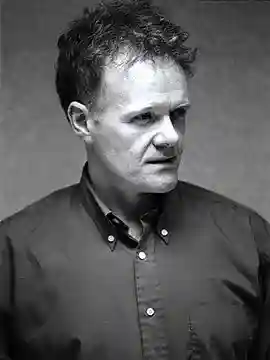There are many ways of creating characters. For a science fiction novel I tend to create the world first, along with the technology or magic that infects the location and makes it interesting and unique. Then I let the effects of this technology build, and change, mutate and turn bad, and I think to myself: who is the worst possible person to tackle such a force? Who would be most easily overwhelmed by it, damaged by it? So the hero is born. This for me is the first step in bringing a protagonist to life, in opposition to a far stronger power. Often I find myself picturing this opposition as an avalanche or a river rolling downhill towards the hero. Now, come to life, I dare you! Fight back. And in the fighting, find your nature.
My new novel A Man of Shadows is set in a city filled with multiple time lines, thousands of them. My private eye hero John Nyquist would therefore be someone who felt ill at ease in such a tangled web of time. He would be struggling to stay in line, in check; even keeping his wristwatch at the correct time is an almost impossible task. This guy is suffering! Now that I like; suffering means I can work with him, allow him to take on form and texture. I can start adding details, just a few here and there. Not too many. I find that highly detailed characters tend to merge together with other characters; they lack defining features. At its simplest level, I try to have two or three things at play in a character’s mind, and to put them in opposition to each other. I find that these simple inner conflicts are more than enough to give a person an individuated outlook and personality.
My second protagonist would be Eleanor Bale, an eighteen year old girl who’s run away from home. Nyquist is employed by the girl’s family to find her. This quest sets the plot moving in the book’s opening pages. Eleanor needed to be differentiated from Nyquist, so I made her someone completely at home in time, in some bizarre way formed of time. Often she works in opposition to Nyquist, but she isn’t a villain, more a victim of strange circumstances, a determined but fragile spirit seeking escape. In many ways she’s tougher than the private eye. Both of them are loners, and at times, lonely. Yet their relationship isn’t based on love: they are fellow travellers sharing the same (incredibly damaged) time line for a while. True, as the story progresses, they offer each other the possibility of friendship, of change, and mutual acceptance. But I wanted it to be hard-won, this emotion, forged against the odds. One of the things I’m constantly trying to guard against is “unearned sentiment”, where characters think and feel things simply because the writer desires to make an audience respond. We’re aware of this sensation many times when watching television dramas, or films. Instead, I like to create the opposition – be it a villain, or a natural or supernatural event – trap the characters inside an impossible situation, and then try to imagine myself inside each of them: how would they react, how would they feel? Then I write. And keep on writing, until it becomes real, or as close to reality as I can make it. Sometimes the tiniest of gestures – a face turning away, a smile, a voice breaking – can achieve the most affecting response.
I haven’t gone into the creation of antagonists here, because that would give too much away about the plot. But right from the very beginning of the process of writing I was thinking of the city of Dayzone as a character in its own right. I think science fiction is a unique genre in this regard: places and objects can have just as much “personality” as a human being. So I tried my best to make the city move and breathe, to grow angry, to revel in its own light and heat and power, to attack, protect, and hopefully at times take on a human aspect. If we’re lucky in the writing process, and a process of osmosis takes place, then the characters and the location both come to equal life on the page. It doesn’t happen all the time, but when it does, it’s a thrill and a half; one of those now and then moments that keep the fingers tapping at the keys, and the words dancing on the screen.
Get A Man of Shadows at Bookshop or Amazon

About the author
Jeff Noon is an award-winning British cult novelist, short story writer and playwright. He won the Arthur C Clarke Award for Vurt, the John W Campbell award for Best New Writer, a Tinniswood Award for innovation in radio drama and the Mobil prize for playwriting.
He was trained in the visual arts, and was musically active on the punk scene before starting to write plays for the theatre. His work spans SF and fantasy genres, exploring the ever-changing borderzone between genre fiction and the avant-garde.







